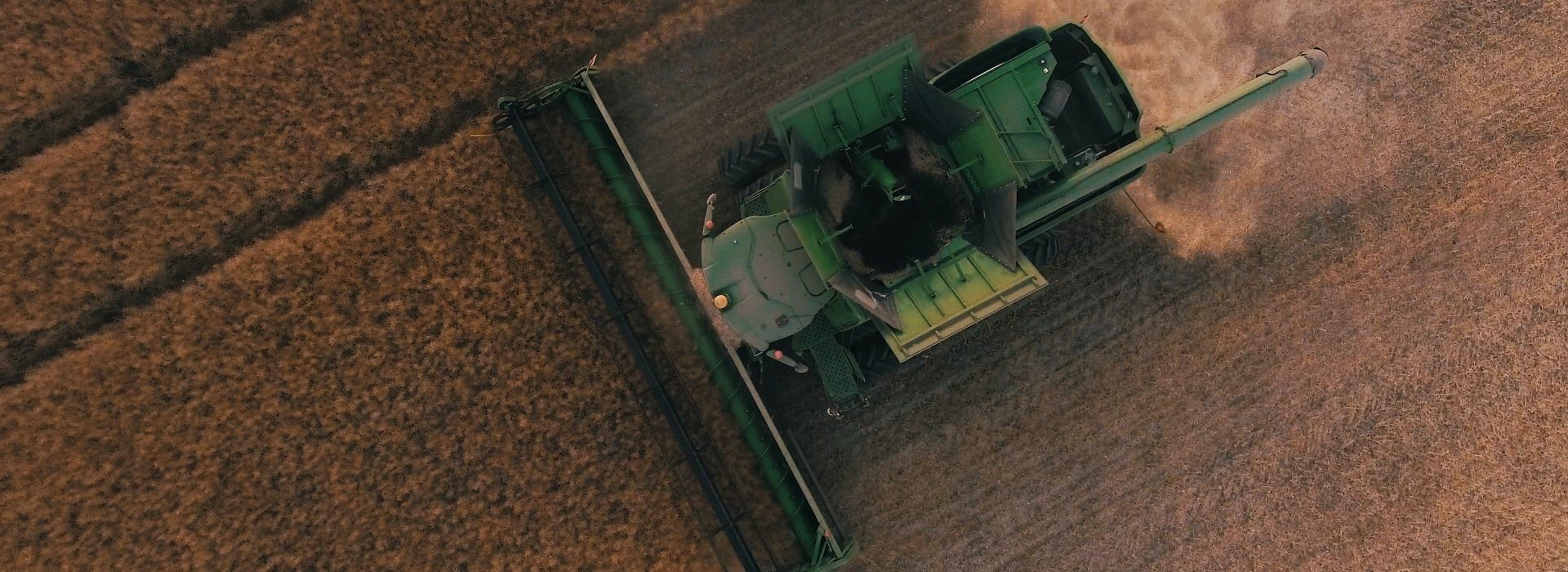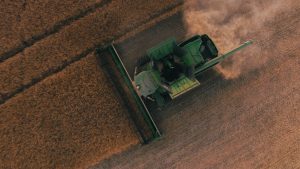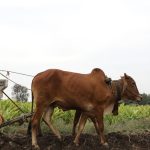Biodiversity loss is accelerating around the world at a rate that is orders of magnitude higher than the average rate over the past 10 million years. The global food system is the primary driver of this trend. Over the past 50 years, the conversion of natural ecosystems for crop production or pasture has been the principal cause of habitat loss, in turn reducing biodiversity.
The Impact of the ‘Cheaper Food’ Paradigm
Our food system has been shaped over past decades by the ‘cheaper food’ paradigm. This has led to the concentration and intensification of agriculture, reducing the opportunity for nature to thrive. The loss of biodiversity and soil fertility leads to a need to intensify agriculture further. The concentration and intensification of agriculture have driven down the cost of staples such as grains, which are now sufficiently cheap to be diverted from direct human consumption to farmed animals. This has led to growth in the global herd of farmed animals, with negative consequences for air and water quality and GHG emissions.
Genetic Pollution and Market Impact Channels
Biodiversity impacts may also be transmitted at a genetic level. Genetic pollution (known as ‘gene introgression’) can occur from crop plants into wild populations, and from non-native fish escaping from aquaculture farms and mating with wild relatives. In both examples, this alters the natural genetic composition of a given location or ecosystem.
Food Demand Growth at the Expense of Biodiversity
Globalized supply chains in a competitive marketplace have resulted in a system in which the food consumed in a given country is often sourced from a combination of local and international suppliers. This has led to food demand growth at the expense of biodiversity.
Impact of Agriculture on Biodiversity
Agriculture, by its nature, creates monocultures – homogeneous areas covered by a single crop – which replace the heterogeneity of the natural environment. Most agriculture relies on inputs that have spillover effects beyond the farmed area itself. For example, pesticides kill not only identified ‘pests’ but other insects in the vicinity. Fertilizers pollute air and water across wide areas. Intensive, large-scale animal farming also has significant impacts on biodiversity.
Intensification and Its Consequences
The intensification of agricultural production has been the most damaging in recent decades in some regions. Intensification is defined as increasing the outputs through using more inputs. Inputs can be pesticides, herbicides, fertilizers, equipment, land (e.g. amalgamating fields or land conversion) or other processes such as allowing grazing farmed animals to degrade the land.
Impacts at Farm and Landscape Scale
The impact of food production on biodiversity arises not from a single fault, but from the nature of the system as a whole. Food production systems impact on biodiversity at multiple scales: from localized impacts on farms, to landscape-level and regional impacts, to impacts that are felt globally.
Impacts at Regional and Global Scale
The impacts of food production on biodiversity are not limited to farm and landscape scales. They also occur at regional and global scales. Globalized supply chains in a competitive marketplace have resulted in a system in which the food consumed in a given country is often sourced from a combination of local and international suppliers.
Solutions and Recommendations
The report outlines several key recommendations for action to harness the opportunities that the coming months offer, and to drive forwards food system transformation in support of biodiversity. These are:
Recognizing the Interrelationship Between Demand and Supply
The first recommendation is to recognize the interrelationship between demand and supply. This involves understanding how changes in patterns of demand for food, the degree to which we protect and restore natural ecosystems, and actions to increase biodiversity on agricultural land can affect future biodiversity.
Adopting a ‘Food Systems Approach’ to Drive Action
The second recommendation is to adopt a ‘food systems approach’ to drive action. This approach considers the food system as a whole, from production to consumption, and identifies how changes in one part of the system can impact others.
Strengthening the Coherence Between Global Agreements and Local Actions
The third recommendation is to strengthen the coherence between global agreements and local actions. This involves creating virtuous circles of reinforcement between global agreements and action at the national level. This can be achieved through ongoing national dialogues to mirror international policy processes, the development of global guidelines to inform and support national-level action, and efforts to strengthen national accounting of the impacts of today’s food system.
Nature-Based Solutions
Nature-based solutions (NBS) are solutions to climate change, biodiversity decline or other environmental challenges that also offer an important means of restoring natural infrastructure and ecosystems, including forests, wetlands and soils. For example, NBS can include forest regeneration to reduce local flood risks, store carbon and preserve biodiversity.
Conclusion
Biodiversity loss is a pressing issue that requires immediate attention. The global food system, shaped by the ‘cheaper food’ paradigm, is the primary driver of this trend. The conversion of natural ecosystems for crop production or pasture has been the principal cause of habitat loss, reducing biodiversity.
Thos article has been inspired by a report published by Chatham House. The report was financially supported by Compassion in World Farming and received in-kind support from UNEP.












